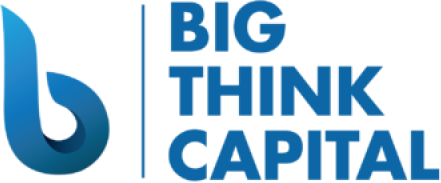Navigating the Aftermath of 2025 Fed Reserve Interest Hike: Proactive Credit Management Strategies for Small Businesses
Estimated Reading Time: 7 minutes
- Small businesses should anticipate increases in financing costs for loans and credit.
- Stay informed about how rising interest rates affect your financing options.
- Proactively managing your credit score is essential for easier financing access.
- Leverage working capital advances and SBA loans to offset increased borrowing costs.
- Develop a strong relationship with your bank during financial turbulence.
Table of Contents
- Understanding the Startling Interest Rate Hike in 2025
- Deciphering the Relation Between Fed Interest Rate and Small Business Financing
- Strategies to Maintain and Improve Your Business’s Credit Score
- How to Leverage Working Capital Advances and SBA Loans
- Building a Secure Financial Strategy with Merchant Cash Advances and Business Lines of Credit
- Developing a Strong Relationship with Your Bank
- Conclusion
Understanding the Startling Interest Rate Hike in 2025
In March 2025, the Federal Reserve raised interest rates by 0.75%, marking one of the largest singular increases in recent years. This decision came in response to ongoing inflationary pressures affecting the U.S. economy, driven by rising consumer prices and supply chain challenges. According to the Bureau of Labor Statistics, consumer prices increased by 5.6% in early 2025 compared to the previous year, underscoring the need for the Fed to intervene.
For small businesses, higher borrowing costs can lead to significant shifts in the financial landscape. The interest rate hike affects various aspects of business financing and operational expenditures; thus, understanding these changes is paramount.
Key Takeaway 1: Small businesses should anticipate increases in financing costs for loans and credit as interest rates rise, making timely and strategic financial management more critical.
Deciphering the Relation Between Fed Interest Rate and Small Business Financing
The relationship between the Federal Reserve’s interest rates and small business financing is profound. When rates rise, the cost of borrowing typically increases, translating to higher monthly payments for existing loans and new debt. Understanding this interplay is crucial for optimizing your financing strategies.
- Loan Costs: As interest rates rise, lenders adjust their rates on loans, lines of credit, and other financing options. This means that small businesses might face steeper repayments, squeezing cash flow.
- Investor Sentiment: Higher interest rates can also impact investor confidence. When investors expect a weaker economic climate due to tighter monetary policy, they may become hesitant to fund small businesses using venture capital or private equity.
- Credit Availability: Lenders often tighten credit standards during periods of rising rates. This could lead to stricter criteria for loan approvals, making it more challenging for small businesses to secure financing.
Key Takeaway 2: Stay informed about how rising interest rates affect your financing options and be prepared to adjust your financial plans accordingly.
Strategies to Maintain and Improve Your Business’s Credit Score Amidst Rising Interest Rates
Maintaining a good credit score is crucial, especially when interest rates fluctuate. Small businesses should take proactive steps to manage their credit health to ensure access to financing even during economic uncertainty. Here are some effective strategies:
- Monitor Your Credit Reports Regularly: Regularly checking your business credit reports can help you identify discrepancies, errors, or negative items that could affect your score. Make sure to dispute any inaccuracies you find.
- Pay Bills on Time: Consistently ensuring that bills and debts are paid on time can greatly enhance your credit score. Late payments can significantly negatively impact your creditworthiness.
- Reduce Your Debt-to-Income Ratio: Focus on paying down existing debts. A lower debt-to-income ratio signals to lenders that you can manage your debt responsibly, which is particularly crucial in a higher interest rate environment.
- Establish Strong Relationships with Credit Issuers: Engaging positively with your lenders can lead to better terms in the future. Being open about your business’s financial health can build trust and may even lead to more flexibility in your credit arrangements.
Key Takeaway 3: Proactively managing your credit score is essential. Improved credit not only makes securing financing easier but can also help you obtain lower interest rates than you might face otherwise.
How to Leverage Working Capital Advances and SBA Loans to Offset Increased Borrowing Costs
As borrowing costs rise due to higher interest rates, small businesses can turn to alternative financing options such as working capital advances and SBA loans to maintain liquidity and operations.
Working Capital Advances
Working capital advances offer a quick and flexible solution for businesses needing immediate access to cash. Here’s how they work:
- Quick Access to Funds: Unlike traditional loans that can take weeks for approval, working capital advances can often be secured within days.
- Flexible Repayment Terms: Repayments are typically structured around your daily credit card sales, which can ease cash flow burdens, especially during high-interest periods.
SBA Loans
The Small Business Administration (SBA) provides loan guarantees, which can make lending less risky for banks and, in turn, lead to lower interest rates for small businesses. Here are some advantages of SBA loans:
- Lower Interest Rates: SBA loans often have lower rates compared to conventional loans, mitigating some impacts of rising rates.
- Extended Terms: SBA loans tend to offer longer repayment terms, providing businesses with lower monthly payments which can help cushion against economic pressures.
Investing in these types of funding can help offset the effects of increased borrowing costs and provide more stability in your cash flow management.
Building a Secure Financial Strategy with Merchant Cash Advances and Business Lines of Credit
In addition to traditional loans, merchant cash advances and business lines of credit can be potent tools for small businesses navigating a higher interest rate environment.
Merchant Cash Advances
Merchant cash advances allow businesses to receive funds based on future credit card sales, offering flexibility when liquidity is tight:
- Fast Funding: Like working capital advances, approval processes are quick, which helps businesses respond to urgent cash flow needs.
- Sales-Based Repayment: The repayment amount adjusts based on daily sales, easing cash flow management during slower periods.
Business Lines of Credit
A business line of credit provides you with access to funds when necessary, allowing for additional flexibility:
- Only Pay Interest on Withdrawn Amounts: Unlike traditional loans, you only pay interest on amounts drawn, reducing overall costs.
- Building Credit History: Successfully managing a line of credit can enhance your credit profile over time.
Both of these options allow businesses to be more adaptive during periods of financial turbulence, providing flexibility to address immediate needs while managing overall costs effectively.
Developing a Strong Relationship with Your Bank Amidst Financial Turbulence
As financial landscapes shift, developing and maintaining a robust relationship with your bank can be a game-changer. Here are some tips:
- Open Communication: Regular communication with your bank can build a rapport, which is especially helpful during times of financial strain. Share your business plans and financing needs proactively.
- Seek Guidance: Don’t hesitate to ask your bank for advice. Many banks have resources and financial experts who can help you strategize for the future.
- Explore Alternative Banking Options: If your current bank can’t meet your needs, consider establishing lines of communication with other financial institutions that may have more flexible offerings.
Building a strong banking relationship can lead to better terms, quicker approvals, and tailored financing options that align with your business goals.
Conclusion
Navigating the financial fallout of the Federal Reserve interest rate hike in 2025 requires strategic foresight and meticulous credit management. By understanding the implications of rising rates, actively managing credit scores, and leveraging various financing options, small business owners can maintain stability and position themselves for long-term success.
For businesses looking to explore funding options tailored to their unique needs, Big Think Capital is here to assist. Our team of funding experts can provide guidance and insight on how to best manage your finances amidst changing economic conditions. Visit bigthinkcapital.com to learn more or speak with one of our funding specialists today.
Frequently Asked Questions
Q: How can small businesses prepare for rising interest rates?
A: Small businesses can prepare by monitoring their credit scores, reducing debt, and exploring alternative financing options.
Q: What financing strategies should small businesses consider?
A: Strategies include leveraging SBA loans, merchant cash advances, and establishing strong relationships with banks.
Q: Why is managing a credit score important during economic uncertainty?
A: A good credit score ensures access to financing and can lead to better loan terms, especially in high-interest environments.






